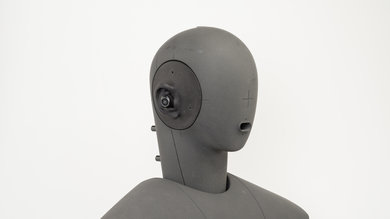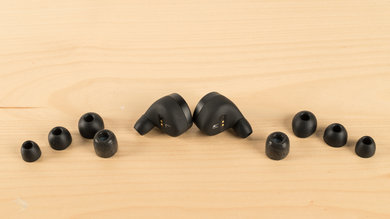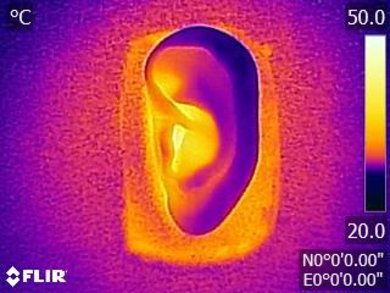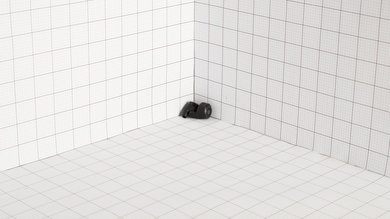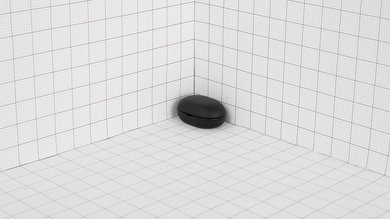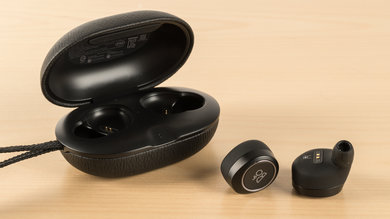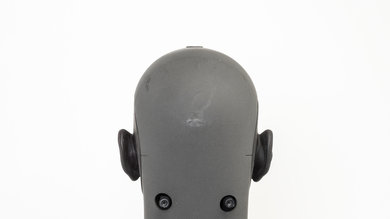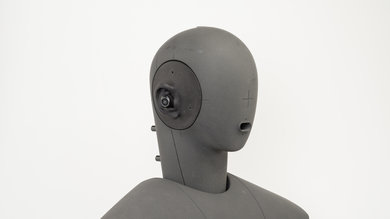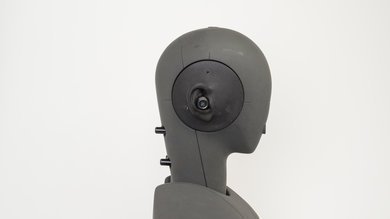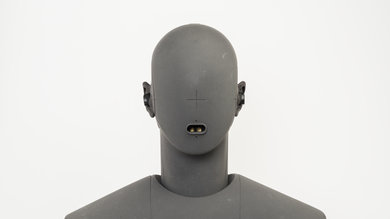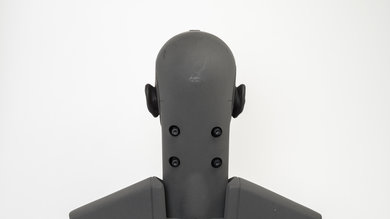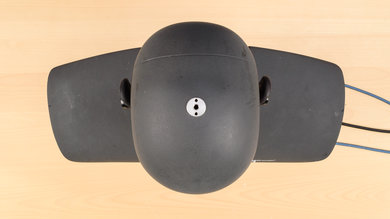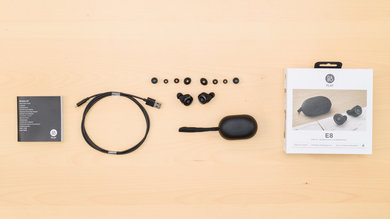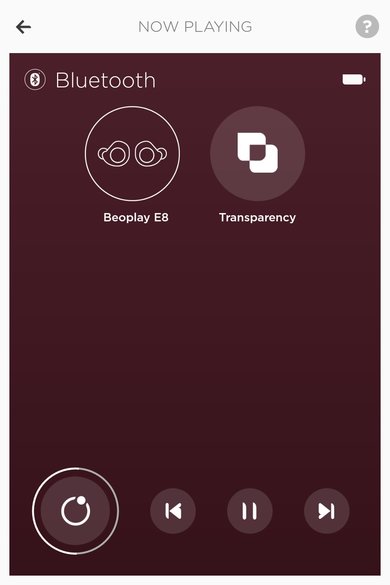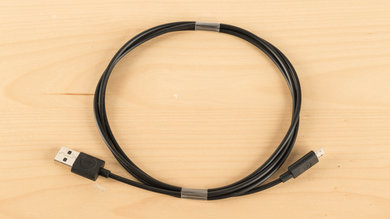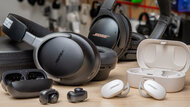The Bang & Olufsen Beoplay E8 Truly Wireless 2018 are versatile, truly wireless in-ears with a sturdy design. They look and feel like premium headphones and have a durable build quality that's compact and stable enough for sports. They also have a comfortable in-ear fit that isolates you from an impressive amount of noise. Unfortunately, they can sound a bit sharp, and their control scheme takes a bit of time to get used to.
Our Verdict
The Bang & Olufsen Beoplay E8 Truly Wireless 2018 are above-average truly wireless in-ears for mixed usage. They're great for sports and commuting, thanks to their compact, stable design and surprisingly good passive isolation. They're also sufficiently comfortable for an in-ear and barely leak even at high volumes. Unfortunately, they have a bit too much latency for gaming and watching movies. Pairing and their control scheme can also be somewhat of a hassle at times. On the upside, they have a decent, customizable sound that's a bit sharp but should be good enough for casual listening.
-
High-end and durable build quality.
-
Compact and comfortable design.
-
Great isolation performance.
-
Relatively high latency.
-
Treble-heavy sound.
The Bang & Olufsen Beoplay E8 Truly Wireless 2018 are okay for neutral listening. They have a well-balanced bass and mid-range but a relatively sharp treble reproduction. You can somewhat improve their frequency response with the Beoplay app, but they won't sound as balanced as some of the other truly wireless headphones we've tested. Also, due to their closed in-ear design, they have a poor soundstage and won't be the ideal headphones for more neutral listeners.
The Bang & Olufsen Beoplay E8 Truly Wireless 2018 are very good for commute and travel. They're very portable and passively isolate against ambient noise better than some noise cancelling headphones. Their control scheme can be tricky at times, but their decently comfortable design and relatively long battery life should be enough for most trips.
The Bang & Olufsen Beoplay E8 Truly Wireless 2018 are great for sports. They're stable and compact, truly wireless headphones with a decently comfortable in-ear fit. They're very portable and come with a charging case that doesn't add too much bulk. Unfortunately, their control scheme is not as responsive, and they come with four tip sizes, including foam tips but no stability fins, so they may not be ideal for all ear sizes.
The Bang & Olufsen Beoplay E8 Truly Wireless 2018 are decent for the office. They isolate well and barely leak even at high volumes. This makes them suitable to use in a lively or quiet office environment. Their battery life might not be ideal for long continuous listening sessions at the office but should be good enough for most uses.
The Bang & Olufsen Beoplay E8 Truly Wireless 2018 are Bluetooth-only headphones that aren't compatible with Xbox or PlayStation consoles. While you can use them with a Bluetooth-compatible PC, they have a mediocre-at-best microphone and a bit too much latency for gaming.
- 7.3 Mixed Usage
- 6.8 Neutral Sound
- 7.9 Commute/Travel
- 8.2 Sports/Fitness
- 7.1 Office
- 5.6 Wireless Gaming
- 5.6 Wired Gaming
- 6.6 Phone Call
Changelog
- Updated Nov 21, 2019: Converted to Test Bench 1.3.1.
- Updated Nov 21, 2019: Converted to Test Bench 1.3.
- Updated Mar 06, 2018: Review published.
- Updated Mar 04, 2018: Our testers have started testing this product.
- Updated Mar 02, 2018: The product has arrived in our lab, and our testers will start evaluating it soon.
Check Price
Compared To Other Headphones

The Bang & Olufsen Beoplay E8 are compact, truly wireless in-ears with a premium-looking design. They're well-built, decently comfortable, and block a lot of noise passively. They also come with a great charging case that provides an additional eight hours of battery life.
If you're looking for other options, see our recommendations for the best true wireless earbuds, the best sounding wireless earbuds, and the best wireless earbuds.
The Bang & Olufsen Beoplay E8 Truly Wireless 2018 are a better truly wireless headset than the Apple AirPods (1st generation). The Bang & Olufsen have a more isolating in-ear fit that also translates into a better bass range thanks to the better seal they create in your ear. The Bang & Olufsen also have a customizable sound and better app support than the Apple, even on iOS devices. The Bang & Olufsen have a better control scheme that gives you all the essential functions, whereas the Apple rely heavily on voice-enabled controls, which is not always practical. On the other hand, the Apple have longer cumulative battery life at 25+ hours compared to the Bang & Olufsen's 15 hours, at best. The Apple also have a more reliable wireless connection with greater range and better latency than the Bang & Olufsen, especially on iOS devices.
The Bang & Olufsen Beoplay E8 Truly Wireless 2018 are a slightly better truly wireless headset than the Jaybird Run Truly Wireless. The Bang & Olufsen have a sleeker, more premium-looking design, and a better isolation performance with their in-ear fit. They also have a smaller and more portable charging case and better default controls than the Jaybird. On the other hand, the Jaybird have a slightly more stable design for sports thanks to the multiple wingtip sizes for different ears. They also have a more customizable app support that gives them a better control over their sound profile than the Bang & Olufsen.
The Bang & Olufsen Beoplay E8 Truly Wireless 2018 are a better truly wireless headset than the Bose SoundSport Free Truly Wireless. The Bang & Olufsen have a more compact and premium looking design than the Bose. They also have a smaller case that's easier to carry around and a better control scheme, although it can be a little confusing at first. The Bang & Olufsen also have a customizable sound thanks to their app support, better isolation than the Bose due to their in-ear fit, and a slightly better battery performance with a faster charge time. On the other hand, the Bose have an earbud fit that some will prefer over the fit of the Bang & Olufsen. The Bose also have a better-balanced sound out of the box, which may not even require an EQ for most tracks.
The Bang & Olufsen Beoplay E8 Truly Wireless 2018 are a slightly better truly wireless headset than the Sony WF-1000X Truly Wireless. The Bang & Olufsen have a more compact and portable design and a better charging case. The Bang & Olufsen also have a better latency and a more balanced default sound that you can customize thanks to the Bang & Olufsen app. They also isolate a little better than the Sony, despite not being noise cancelling. On the other hand, since the Sony have ANC, they do a bit better against low-frequency noise like the rumbling sounds of an engine.
The Sennheiser MOMENTUM True Wireless and Bang & Olufsen Beoplay E8 Truly Wireless 2018 are very similar headphones, even in design. They have the same style and perform quite similarly in most of our tests. However, the Bang & Olufsen are significantly more comfortable and have slightly longer battery life, with a useful auto-off timer. On the other side, the Sennheiser have a better wireless range, support lower latency codecs, and offer a few more features like a talk-through function on the earbuds.
The Bang & Olufsen Beoplay E8 2.0 Truly Wireless 2019 are slightly better than the Bang & Olufsen Beoplay E8 Truly Wireless 2018 but won’t be worth the upgrade if you already have the first version. Their case now supports wireless charging, and their treble range is slightly more accurate but is still very sibilant. However, the 2.0 model now has significantly higher latency than the first. Other than that, the two models are pretty much identical.
Video
Test Results
The Bang & Olufsen Beoplay E8 have a premium-looking design. They don't stick out of your ears like the Apple AirPods (1st generation) Truly Wireless or the Bose SoundSport Free Truly Wireless. The materials used in their build quality feels high-end and durable. The earbuds are slightly angled to fit better within the contours of your ears, and they also come in a couple of color schemes.
The Bang & Olufsen E8 are comfortable, truly wireless in-ears that come with multiple tip sizes. They have four silicone tips and a pair of memory foam tips that help you get a good and secure fit. The earbuds are also lightweight, and since they're truly wireless, there's no cable pulling on the buds, making them less noticeable once in your ears. Unfortunately, unlike the Bose SoundSport Free Truly Wireless, they do put a bit of pressure on your ear canal, which may not be as comfortable for all users, especially if you're not generally a fan of in-ear headphones.
The Bang & Olufsen Beoplay E8 have a decent control scheme with a lot of functionality, but the touch-sensitive inputs can take a bit of time to get used to. They provide call/music, track skipping, and volume controls, as well as an ambient mode that you can quickly enable by tapping the left earbud. The rest of the controls are a combination of holds or multiple taps, which can be slightly finicky at times. The volume controls especially are a bit of a hit or miss. You have to press and hold either the right earbud for volume up or the left for volume down. Unfortunately, since the touch-sensitive pads are not always responsive and there's no clear auditory feedback when turning up the volume, it can be a little frustrating.
The Bang & Olufsen E8 are very breathable. They're compact and don't cover the ears, which barely causes a temperature difference when exercising or working out. They trap a little bit of heat in the ear canal, but it's negligible and won't make you sweat more than usual, even during more intense workout routines.
The Bang & Olufsen Beoplay E8 earbuds are very compact and easy to carry around on your person. They will easily fit into most pockets, and the earbuds are a lot smaller than the Bose SoundSport Free. Their charging case is also fairly portable and should fit into most pockets.
These headphones come with a great hard case that's decently sturdy and portable. It will shield the headphones from impacts and drops and has a decently high-end feel thanks to the leather coating. It's also more compact than the cases that come with some other truly wireless earbuds, like the Jaybird Run Truly Wireless and the Bose SoundSport Free Truly Wireless. However, it's quite a bit bigger than the Apple AirPods (1st generation) Truly Wireless' case and doesn't have the metal finish of the Sony WF-1000X Truly Wireless.
The Bang & Olufsen Beoplay E8 have a great build quality. They look and feel premium and are made out of a durable combination of plastic, rubber, and metal which feels high-end and sturdy enough to not get damaged by a couple of accidental drops. The case is also decently durable and should shield the headphones from impacts and drops fairly well. It has a textured leather coating which makes it a bit less slippery and feels a bit more premium than the Jaybird Run Truly Wireless case. However, the hinge feels fairly weak, and the case cover is thin.
These are stable, truly wireless in-ears and come with multiple tip sizes to help you find a good fit. The lightweight design does not move much once in your ears and should be stable enough for running and exercising. However, they don't have as many tips as the Jaybird Run Truly Wireless, so they may not be the ideal headphones for sports for all users and don't have any stability fins. The earbuds are shaped to fit well within the contours of your ears, but they do slip out from time to time.
The Bang & Olufsen E8 have excellent frequency response consistency. If the user can achieve a proper fit and an air-tight seal using the assortment of tips that come with the headphones, they should get consistent bass and treble delivery every time they use the headphones.
The Bang & Olufsen E8 have excellent bass accuracy. Their LFE (low-frequency extension) is at 10Hz, suggesting a deep bass. Accordingly, low-bass is underemphasized by only 1dB, indicating a balanced production of thumps and rumbles common to EDM, hip-hop, and film scores. Mid-bass, occupied by the body of bass guitars and punch of kick drums, lacks by about 3dB. High-bass shows a 1dB bump that continues into the mid-range. This adds a bit of boominess to the sound. Overall, the bass is well-extended and thumpy but lacks body and punch and could sound slightly boomy.
The Bang & Olufsen E8 have great mid accuracy. The 3dB bump in low-mid, which is the continuation of the high-bass overemphasis, makes mixes a bit muddy and cluttered and vocals a bit thick sounding. Additionally, mid-mid and high-mid, where the upper harmonics of vocals and leads sit, are flat and within 1dB of our target response.
The Bang & Olufsen E8 have mediocre treble accuracy. Low-treble is under our target by about 4dB. This negatively affects the detail and presence of vocals and lead instruments. Conversely, mid-treble is overemphasized by about 4dB.
The Bang & Olufsen E8 have an excellent imaging performance. Their weighted group delay is 0.16, which is very good. The graph also shows that the entire group delay is under the audibility threshold. This ensures a tight bass and a transparent treble. Also, the L/R drivers of our test unit were decently matched but showed some mismatch in frequency and phase response, which could have a small negative effect on the coherency of the stereo image. But it wouldn't affect the accurate placement and localization of objects (like voice and footsteps) in the stereo field. Please note that these results are only valid for our unit, and your experience may vary.
Like most other in-ears, the soundstage is poor. This is because in-ears bypass the pinna (outer ear) and don't interact with it while activating the resonances of the pinna is one of the key factors in creating a speaker-like and out-of-head soundstage. Also, because of their closed-back design, their soundstage is less open than many open-back headphones.
The Bang & Olufsen E8 have a great noise isolation performance. In the bass range, where the rumble of airplane and bus engines sit, they achieve about 11dB of isolation which is okay. In the mid-range, important for blocking out speech, they achieve more than 19dB of noise isolation, which is very good. In the treble range, occupied by sharp sounds like S and Ts, they reduce noise by more than 46dB, which is excellent.
The Bang & Olufsen Beoplay E8 have an incredible leakage performance. It's concentrated entirely in the treble range and at a very low level. Practically, their leakage is non-existent unless you are blasting your music in a very quiet environment.
The mic performance is mediocre. Speech recorded or transmitted with this microphone will sound quite thin and lacking in detail and presence. But it will still be relatively easy to understand in quiet environments. In noisy situations, they struggle to separate speech from ambient noise even in moderately loud places like a busy street.
The recording quality of the mic is mediocre. The LFE (low-frequency extension) of 340Hz suggests a recorded/transmitted speech that sounds quite thin. The HFE (high-frequency extension) of 3.5KHz indicates a speech that's understandable but lacks brightness and airiness. Also, the area between LFE and HFE is captured decently.
The integrated microphone's noise handling is mediocre. In our SpNR test, they achieved a speech-to-noise ratio of 12dB, suggesting they're best suited for quiet environments and may struggle to separate speech from background noise in moderately loud environments.
The Bang & Olufsen Beoplay E8 have a mediocre battery performance. They provide about 4.1 hours of continuous playback, and their case holds about eight additional hours of battery life. You can check how many charges are left in the case with the two LED indicators next to the USB port. They also charge quickly at 1.2 hours for the earbuds and 2.5 hours for the earbuds and the case. However, battery performance can vary with real-life usage, meaning that you may have a different experience.
The Beoplay app is okay. It looks good but lacks a few features. It provides a transparency switch with some options for how much ambient noise is fed into the headphones. It also gives you access to presets to customize the sound profile, but there's no EQ. Overall it's a decently useful app, but it could use a few more customization options.
The Bang & Olufsen Beoplay E8 have alright Bluetooth connectivity. They don't have simultaneous multi-device pairing and don't support NFC. Their pairing procedure is also a bit tricky as you have to press and hold both earbuds for 5 seconds until the LED indicator turns blue. Unfortunately, there's not much feedback or a distinct auditory chime to let you know you're in pairing mode. On the upside, they do remember the last paired device when you turn the earbuds on, so if you're not often switching between Bluetooth sources, they should be fine.
They have a bit too much latency for comfortably watching videos without any sync issues, but they have lower latency than the Bose SoundSport Free Truly Wireless and the Sony WF-1000X Truly Wireless.
The Bang & Olufsen Beoplay E8 don't have an audio cable or a wired connection. If you want stable in-ears with a wired connection, you may prefer the 1More Triple Driver.
Comments
Bang & Olufsen Beoplay E8 Truly Wireless 2018: Main Discussion
Let us know why you want us to review the product here, or encourage others to vote for this product.

